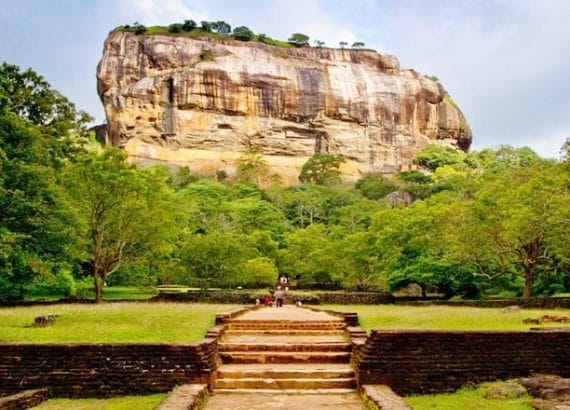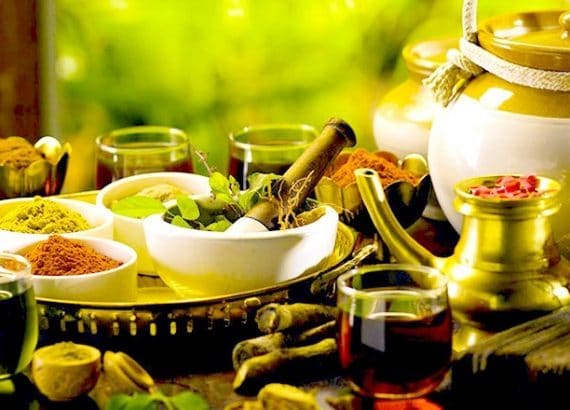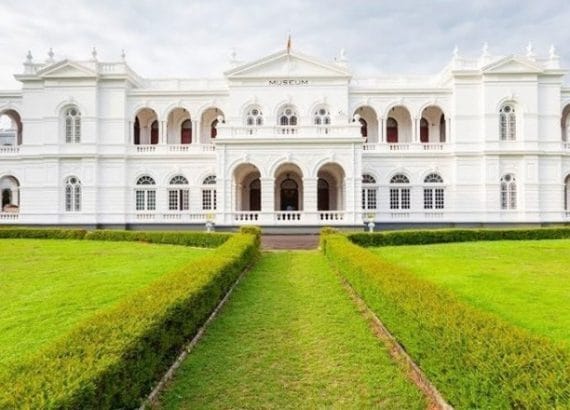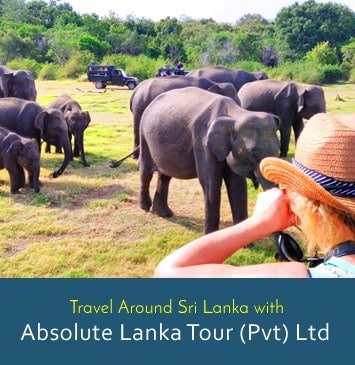Sri Lanka Monsoons and Festivals Through The Year
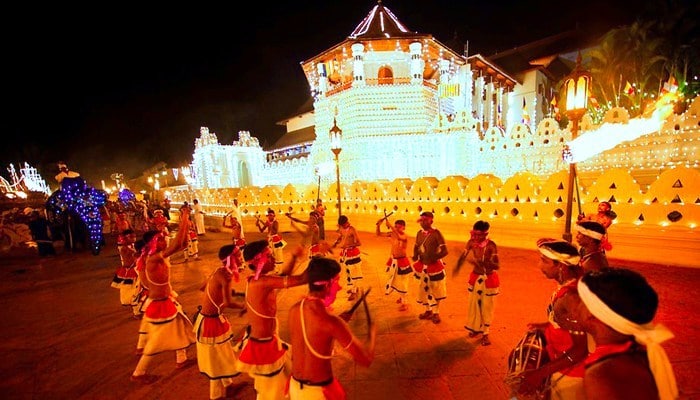
Sri Lanka Monsoons and Festivals Through The Year
There always seems to be some festivity or celebration taking place in Sri Lanka at any given time. With Buddhists, Hindus, Muslims and Christians making up the country’s population, most events are religious in nature. Many of the Buddhists and Hindu festivities feature elaborate processions with dancers, drummers and even elephants, and attract pilgrims from around the island. Buddhist, Hindu and Muslim festivals follow the lunar calendar and their dates vary from year to year. All full moon or poya days in Sri Lanka are public holidays and are associated with an event in the life of the Buddha or the history of Buddhism. On poya days, Buddhists visit nearby temples with offerings, and places of entertainment are often closed. In addition to religious events, several other holidays such as National Day, celebrating Sri Lanka’s independence, are also observed.
Monsoons
Due to its location in the equatorial and tropical zones, Sri Lanka has been influenced by the monsoons which consist of four very distinctive seasons.
First Inter-monsoon Season (March – April) – Thunderstorm type rainfall with warm and uncomfortable conditions.
Southwest-Monsoon Season (May – September) – The warm season is eased away by the windy weather during this particular monsoon season. Rains can be expected during any time of the day.
Second Inter-monsoon Season (October – November) – Rains occur with thunder storms while the influence of the weather system like depression and cyclones in the Bay of Bengal is considered to be common. The whole island experiences wide spread rain with strong winds.
Northeast-Monsoon Season (December – February) – Cold and dry windy weather can be expected during this season while cloud free and days filled with sunshine can be expected. Rain can be expected in several parts of the island as well.
Southwest Monsoon
Sri Lanka is affected by two monsoons, each hitting a side of the island at different times. The southwest monsoon arrives in the South, West and the Hill Country from April or May until September, when days can get very humid with short, heavy rainstorms. Many Colombo residents head to Nuwaraeliya over the New Year period to escape the heat of the lowlands. These monsoon months are the best time to visit the northern and eastern parts of the island. Some of Sri Lanka’s biggest and best festivals take place during this period, including the
Sinhala and the Tamil New Year.
Northeast Monsoon
The Northeast monsoon is the weaker of the two and affects the North and East of the island from October until February or March, although other parts of the island can also experience rain during this time. The best time to visit Sri Lanka is between December and April, although this is when it is busiest, with prices rising significantly over Christmas and New Year.
January
Duruthu (Jan), Kelaniya. The poya day commemorates the first of the Buddha’s three visits to Sri Lanka. A perahera (parade) is held at the Raja Maha Vihara inKelaniya, north of Colombo.
Tamil Thai Pongol (mid-Jan), nationwide. This Hindu harvest festival, lasting two days, honors the sun god Surya and the cattle that have ploughed the fields over the last year. There are fireworks and festivities, and pongol, a sweet rice dish, is prepared in homes.
Galle Literary Festival (Jan/Feb/Mar), Galle. This annual five-day literary festival based in and around Galle Fort attracts international and domestic authors. Several talks and workshops are organized.
February
Navam Perahara (Feb), Colombo. The Navam poya day commemorates two significant incidents: the first Buddhist Council and the appointment of two chief disciples of Gautama Buddha. It is celebrated by a large perahara, in which a procession of elephants and dancers begins at the Gangaramaya Temple and winds its way around the Vihara Mahadevi Park and Beira Lake in Colombo.
National Day (4 Feb), nationwide. This event marks Sri Lanka’s independence from British rule in 1948. Th day is celebrated with parades and merrymaking.
Maha Shivarathri (late Feb/ early Mar), nationwide. This Hindu festival is dedicated to the god Shiva. Devotee’s fast and all-night pujas are held in temples.
March
Good Friday is a Christian holiday celebrating the crucifixion of Jesus and his death at Calvary. It is observed during Holy Week as part of the Paschal Triduum on the Friday preceding Easter Sunday, and may coincide with the Jewish observance of Passover. It is also known as Holy Friday, Great Friday, and Black Friday.
Easter (Mar/Apr), nationwide. Passion plays are performed on the island of Duwa near Negombo, Jaffna and other coastal areas with catholic populations. On the following Sunday, Easter is celebrated with re-enactments of Christ’s crucifixion and large processions.
April
Sinhala and Tamil New Year (mid-Apr), nationwide. This two day celebration of the New Year is typically a family holiday. Houses are cleaned, traditional treats are prepared, new clothes are worn and gifts exchanged. On an auspicious day after the celebrations, a senior male member of the family anoints the others with a special oil to bring them luck for the following year.
May
May Day (1 May), nationwide. Originally, street demonstrations and marches were organized by workers and their unions on this day to promote workers’ rights. Today, rallies and demonstrations still take place on the island, with the largest ones in Colombo and the main cities, but many are politically motivated to promote messages of political parties.
Vesak (May), nationwide. This is the most important poya day in the Buddhist calendar as it celebrates the Buddha’s birth, enlightenment and death. Devotees dressed in white can be seen heading to the temple early in the morning. During this two-day festival, paper lanterns are hung outside homes, oil lamps are lit and pandols (large platforms) display scenes from the life of the Buddha. It is also considered propitious to distribute food and drink during this time, and dansals (roadside stalls) offering free refreshments to passers-by are set up across the island.
June
Poson (Jun), nationwide. Poson poya day celebrates the introduction of Buddhism to Sri Lanka. Devotees flock to Anuradhapura to see the festivities at the temples or climb the steps to the dagoba on the summit at Mihintale, where Mahinda converted King Devanampiya Tissa and his courtiers.
July
Esala Perahera (Jul/early Aug), Kandy. The most famous event on the island, Esala Perahara celebrates the arrival of the Tooth Relic in Sri Lanka. The festival lasts for 10 days, featuring a grand procession of elephants, dancers and drummers that parades through the streets of Kandy, growing larger and longer every night. Accommodation over this period should be booked well in advance. Dondra and Colombo also celebrate the Esala full moon on the tenth day.
Kataragama Festival (Jul/early Aug), Kataragama. This festival is also held at the time of the Esala full moon. Pilgrims descend on Kataragama town for the celebrations, which are perhaps best known for self-purification rituals that involve self-mutilation and fire walking. The festival marks the end of the two-month long Pada Yatra pilgrimage from Jaffna to Kataragama.
Vel (Jul/Aug), nationwide. This Hindu festival is dedicated to Skanda or Murugan (Kataragama), the god of war. Ornate chariots bearing a statue of the god or his vel (spear) are paraded through the streets or around the temple gounds. Accompanied by pilgrims. The deities are brought in a procession from the Sammangodu Sri Kathirvelautha Swami Temple in Pettah to the Sri Manickavinayagar Temple in Bambalapitiya and separately, from the Kathiresan Kovil in Pettah to the New Kathiresan Hall in Bambalapitiya.
Nallur Chariot Festival (Jul/Aug), Jaffna. This is Jaffna’s main festival and it has steadily grown in popularity since the end of the Civil War. The festival is dedicated to Skanda and lasts for 25 days. Every day throughout the festival, a chariot procession takes place within the temple premises in the morning and outside the temple in the evening. Devotees, drummers and dancers also participate in the procession.
August
Elephant gathering
(Aug-Oct), Minneriya National Park. Elephants gather at the Minneriya tank during the height of the dry season.
September
Dussehra (Sep/Oct), nationwide. Also known as Durga Puja, this Hindu festival honors the goddess Durga, who defeated the demon Mahishasura, and also celebrates the Hindu god Rama’s victory over Rawana (King of Lankapura).
October
Deepavali (late Oct/early Nov), nationwide. The festival of Lights, symbolic of good triumphing over evil, is celebrated by all Hindus. It also commemorates Rama’s return with the rescued Sita after 14 years in exile. Lamps are lit in Tamil households and in places of worship.
November
Hajj festival
Eid-al-Adha is also called the Hajj festival, Feast of the sacrifice, the Greater Eid and Eid e Qurban. It is the second religious holiday in the Islamic calendar and is celebrated by Muslims all over the world. The Hajj festival is commemorated by many Muslims with a pilgrimage to Mecca during the Hajj week. It is said that this is the largest gathering of Muslims in the world every year. Family members dress up in new clothes and visit relatives and friends. Giving money to poorer families in the community is also considered a good deed, enabling them to join in the celebrations.
December
Unduvap (Dec), nationwide. This poya day, also known as Sanghamitta Day, marks the arrival of the sacred Bo tree sapling from India, which was planted in Anuradhapura. It is said to be a cutting from the bo tree under which the Buddha gained enlightenment and was carried to Sri Lanka by Sanghamitta, King Asoka’s daughter. The pilgrimage season to Adam’s Peak begins on this day and continues until Bak poya day in April. Christmas (25 Dec), nationwide. Celebrated by the Christian population, this festival, rejoicing the birth of Jesus, is a public holiday. Festive decorations and trees can be seen in shopping centers throughout the country and at roadside stalls.

